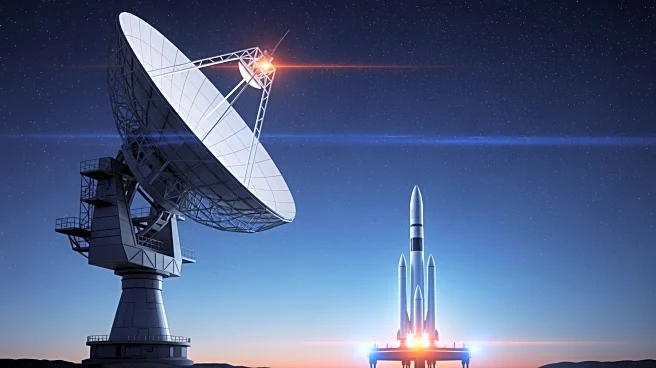What's Happening?
Researchers at the New Jersey Institute of Technology's Center for Solar-Terrestrial Research have recorded significant disruptions in Earth's ionosphere due to a series of powerful X-class solar flares. These flares, occurring between November 9 and
14, 2025, originated from a single active region on the sun, AR4274, and included an X5.1 event, the strongest flare of the year. The flares caused R3 radio blackouts across Africa and Europe and fueled a major geomagnetic storm, resulting in auroras visible at unusually low latitudes, including Florida. NJIT's radio telescopes captured the disturbances in real-time, showing chaotic radio bursts indicative of ionospheric disruption.
Why It's Important?
The solar flares' impact on the ionosphere highlights the vulnerability of Earth's technological infrastructure to space weather events. Disruptions in radio signals, GPS accuracy, and satellite orbits can have significant consequences for communication systems, navigation, and space operations. The event underscores the importance of understanding solar activity and its effects on Earth, especially as reliance on space technology grows. The research conducted by NJIT provides valuable insights into the dynamics of solar flares and their terrestrial impacts, contributing to the development of strategies to mitigate potential disruptions.
What's Next?
As the sun approaches the peak of its 11-year activity cycle, similar solar storms are expected in the near term. Researchers are continuing to analyze the full impact of the recent storm, with implications for power grids, radio communications, and satellite safety. The NJIT team is enhancing their observational capabilities, integrating GPS measurements to better understand the effects of solar and geomagnetic activity on technology. This research is crucial for preparing for future solar events, which will become less frequent as the sun's activity decreases but will return in the next cycle.















